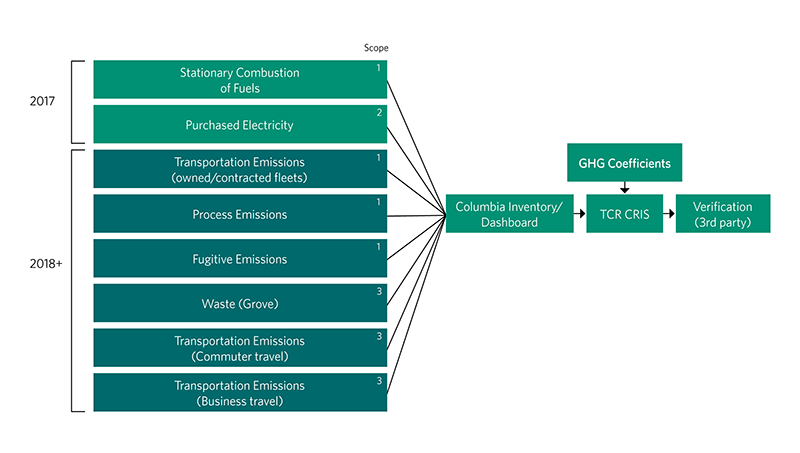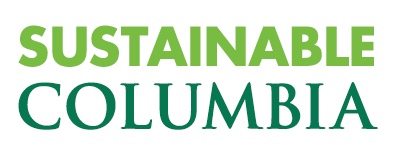Formalizing Columbia's Greenhouse Gas Program
Beginning in 2006, Columbia has tracked GHG emissions from its Morningside Heights campus building portfolio in accordance with the NYC Mayor’s Carbon Challenge. Starting in 2017, Columbia will begin to account for and publicly report Scope 1 and 2 absolute emissions from stationary combustion of fuels and purchased electricity through The Climate Registry, a rigorous and internationally accepted emissions accounting protocol. Over the course of two years, the University will gradually integrate emissions from business travel, commuting and waste from operations. Columbia will continue to also report its emissions to NYC for the purposes of continuing its commitment to the NYC Mayoral Carbon Challenge.
The Carbon Challenge inventory tool serves to measure and track Columbia’s GHG emissions for the purpose of participation. To date, it has reflected Columbia’s Scope 1 emissions from stationary sources and Scope 2 emissions from purchased electricity measured in carbon dioxide equivalents using grid coefficients frozen at 2005 levels.* The use of a static electricity coefficient is inconsistent with generally accepted accounting treatment and materially overstates Columbia’s GHG emissions as the NYC grid carbon intensity has declined substantially since the start of the Carbon Challenge.
*Notably, New York City itself, administrator of the Carbon Challenge, reports its emissions using a more widely accepted protocol.
As local and state governments continue to find new ways to decarbonize the energy grid, making it cleaner, Columbia must track these changes and use that tracking to inform decisions about sources of its Scope 1 and 2 emissions. Columbia commits to ensure a complete, consistent, accurate, and transparent reporting of all relevant GHG emissions and reductions over time. To this end, Columbia is determined to employ nationally and internationally accepted emissions accounting and reporting standards and methodologies.
After extensive analysis and research of best practices, Columbia has elected to join The Climate Registry (TCR) and will account for and report emissions in conformity with TCR’s rigorous guidance, standards, requirements, and methodologies. This will provide Columbia with a more rigorous approach to manage its comprehensive GHG program and public inventory. Integration with TCR will take place over two years as described below. Columbia will continue to also report its GHG emissions to New York City for the purposes of the NYC Mayor’s Carbon Challenge using the unique conventions required for that purpose.
FY 2006 to CY 2016 Existing Inventories
Existing inventories will be updated to reflect then current NYC grid intensity for purchased electricity.
CY 2017 Transitional Inventory
It is Columbia’s intention to become a member of TCR and implement its first independently verified transitional inventory with the following reporting boundaries for CY 2017:
- the Morningside Heights campus
- Scope 1 emissions from stationary combustion of fuels
- Scope 2 emissions from purchased electricity
- all six Kyoto gases
CY 2018+ Transitional Inventory
Columbia will expand the 2017 transitional inventory boundary to include the following for CY 2018:
- all Scope 1 emissions
- all Scope 2 emissions
- Scope 3 emissions from business travel, commuting, and waste from operations
In alignment with The Climate Registry protocol, Columbia will track and report absolute GHG emissions. While other metrics may also be measured, the University will establish its primary GHG emissions goal to be a reduction in absolute emissions.
Columbia will continue to report progress toward the NYC Carbon Challenge in terms of carbon intensity.
- Achieve a 35 percent absolute reduction in select Scope 1 and 2 emissions from a FY 2006 baseline applying TCR guidelines (also referenced in the Building Energy Supply and Demand section).
- Assess and establish new goals for 2020 and beyond for the expanded 2018+ inventory to match or exceed New York City’s goal of reducing all GHG emissions by 80 percent by 2050.
- Continue progress towards 30 percent carbon intensity reduction under the NYC Carbon Challenge.


